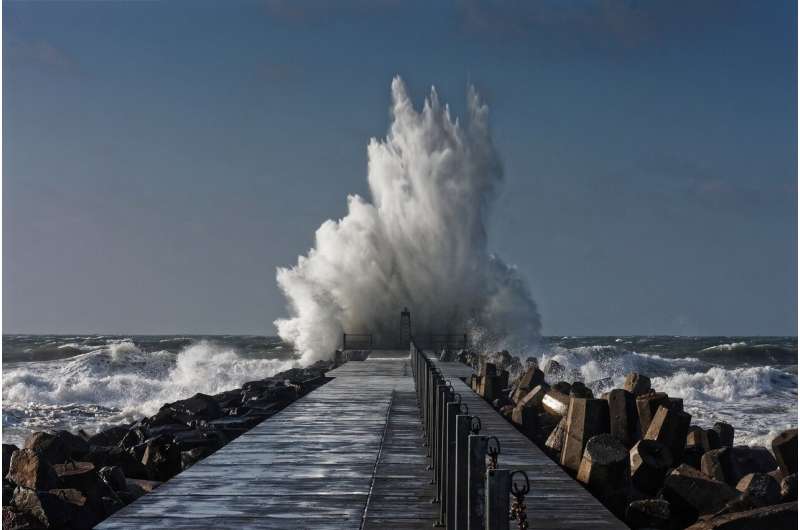Credit: Pixabay/CC0 Public Domain
Storm surge, the massive mound of water that builds up and comes ashore during a hurricane, is often the deadliest and most destructive threat from these devastating storms.
In fact, storm surge has accounted for about half of all the deaths in hurricanes since 1970, according to the National Hurricane Center. It caused most of the 1,800 deaths in Hurricane Katrina in 2005.
Storm surge is characterized by water being pushed toward the shore by the force of the winds moving around the storm, the National Oceanic and Atmospheric Administration (NOAA) said.
Storm surge watches and warnings are now separated from hurricane alerts because hurricane-force winds and storm surges don't always occur at the same place or the same time, said Rick Knabb, the former director of the hurricane center, and now the hurricane expert at the Weather Channel.
Preparing for hurricane-force winds is different than for storm surge, he said. For storm surge, people should evacuate, while for wind, they can stay in place in a strong structure as long as it's away from flood-prone areas, Knabb said.
What is a storm surge warning?
A "storm surge watch" is issued when flooding is possible, while a "warning" is issued when flooding is expected. Every coastal city along the Gulf or East Coast of the U.S. is at risk of storm surge, the hurricane center said.
In addition to being the deadliest threat, storm surge is also typically the most destructive part of a hurricane. In Hurricane Sandy in 2012, storm surge-induced flooding measured as high as nine feet above ground in parts of New York and New Jersey, leading to billions of dollars in damage.
The damage occurred even though Sandy spun ashore as the equivalent of only a Category 1 hurricane, with winds of about 80 mph, and was downgraded below hurricane status shortly thereafter.
Impact of climate change
Another factor: Climate change could worsen storm surge, one recent study suggests. The frequency of extreme storm surges is projected to increase by as much as 10 times in coming decades because of warming temperatures, a 2013 study found. Global warming has already doubled the chance of storms like Katrina, according to the study, which was led by climate scientist Aslak Grinsted of the University of Copenhagen in Denmark.
Storm surge flooding does not include floods caused by the heavy rain from a hurricane, such as what happened in 2017 in the Houston area with Hurricane Harvey and in North Carolina in 2016 during Hurricane Matthew.
It also has nothing to do with tsunamis, large ocean waves generated by offshore earthquakes that are not related to weather.
(c)2022 USA Today
Distributed by Tribune Content Agency, LLC.
























